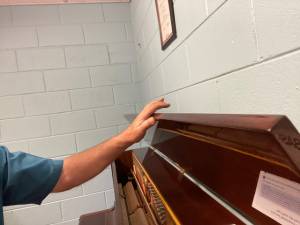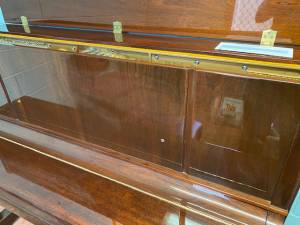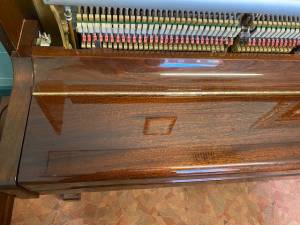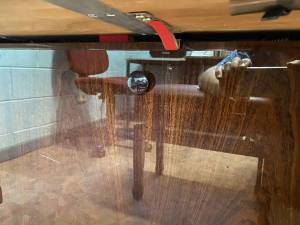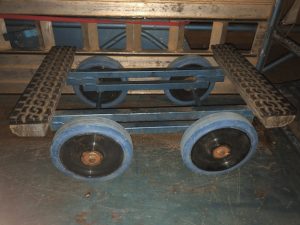There are 3 types of Polish on pianos
When considering cleaning your piano, it’s important to note the type of polish it is finished with. Using incorrect products on surfaces can lead to severe damage. There are three kinds of polishes, high gloss, french polish and spirit lacquer.
High gloss finish pianos
Modern pianos with a high gloss finish have what is called a 2 pack finish. This is like a thick plastic finish. To clean hi gloss finishes like this you can use a clean moist shammy. This is good where there is a lot of thick dust on the piano.
However recently we have been using a new polish called Brillianize. We sell this for $25.00 per 240ml pump spray with a microfibre cloth to use with it.
This Polish can be used for any shinny surface around the house and some customers buy it by the litre. You will need to call us and order first though.
If your piano is modern and has a flat finish then just use the damp shammy. If you use the Brillianize on this finish it will go shinny as Brillianize fills very fine scratches.
High gloss french polish and Spirit lacquer finish
Older piano have a high gloss French Polish finish or a Spirit Lacquer finish. In Perth we have a manufacturer’s of a very good Polish for this type of finish, it’s called Gilly Stevenson’s liquid bees wax Polish. The Gillie Stevenson’s range is available direct or from Bunnings warehouses. If you’re in a country town, IGA often stock this Polish! One Polish we have found very good for tired pianos is their Scratch cover.
It’s a good idea to start with the Cleaner and Reviver. You will need lots of elbow grease but your persistence will show under the grime and years of waxes the original high gloss finish. You might find it easier to put a blanket on the table and remove the bottom door and start with that.
Related article: how to take your piano apart safely.
If you decide to remove the parts you can carefully vacuum clean inside the piano with an old paint brush and the crevice tool.
Tip: Don’t use a wet cloth on old pianos. They have a veneer finish and it will lift the Polish.
If you want your old piano looking fantastic then we offer an open grain genuine French Polish finish as part of our Polishing service. Send photos of your piano and we can give you an estimate.
How to clean the keys on your piano
I often get asked how to clean the keys on the piano. Modern pianos have a plastic like cover on the keys and the plank keys are plastic as well. You can use the Brillianize Polish on the keys however it does make them quite slippery. Good if you want to play God save the Queen in 14.65 seconds but not generally recommended.
I suggest using a slightly damp cloth. Then go over with a tea towel after.
Ivory keys
If you have ivory keys ( you can tell if you can see a join in front of the black keys ) then use the slightly damp cloth but make sure the white and black keys are dry straight after. This will take off the finger grease and kiddy grime.
The black keys on an old piano are often high gloss French Polish so they don’t like moisture. And the ivory will curl and lift if they get wet so it’s very important to dry the keys as soon as you have cleaned them. I normally do octave at a time.
Brass hinges, locks and lock plates
Pianos have brass hinges, lock and lock plates. To clean these it is best to get a professional to do it. They need to be removed and screws in the action of a piano will cause sticky notes.
When we clean the brass work we use a buff and steel wool with Brasso. We then coat the finish with a lacquer to stop the brass work tarnishing. So if you do try it yourself this lacquer needs to be removed first. Lots of hard rubbing.
Polishing the pedals on the piano
Pedals are also covered with Lacquer and so if your persistent you will get a good result. If you are using Brasso and steel wool then you will need to protect the Polish finish on the piano with a cardboard cut out or masking tape!
Hope this helps!
Please don’t hesitate to contact me if you are not sure. You can always send photos and I will do my best to advise the best solution.
- Gary
The post Tips for cleaning your piano appeared first on Piano Magic.
from Piano Magic https://www.pianomagic.com.au/maintenance/tips-for-cleaning-your-piano/

